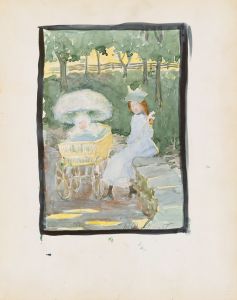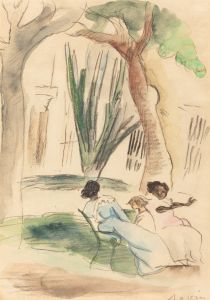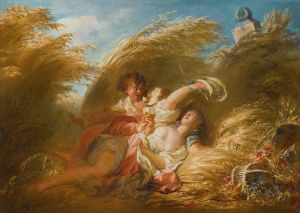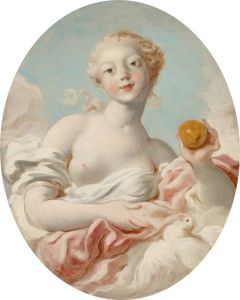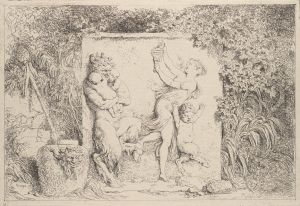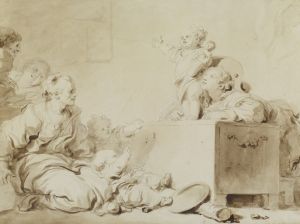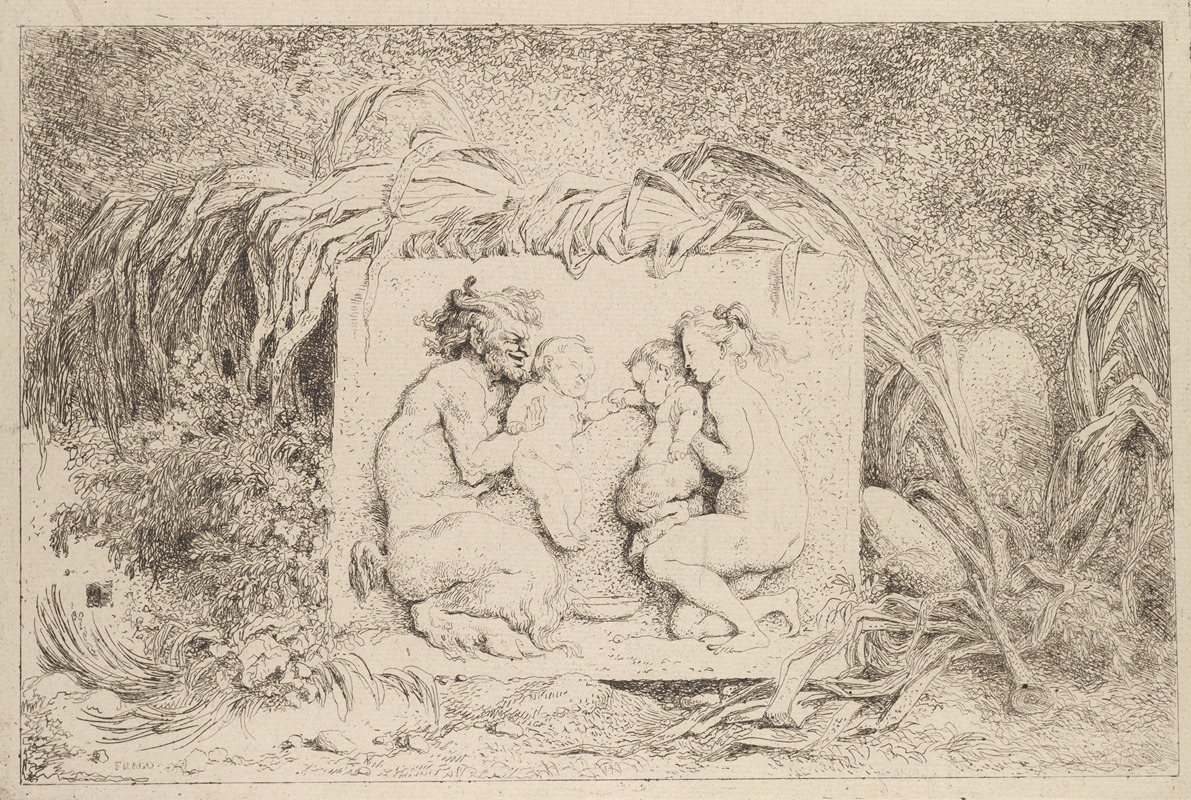
The Satyr’s Family
A hand-painted replica of Jean-Honoré Fragonard’s masterpiece The Satyr’s Family, meticulously crafted by professional artists to capture the true essence of the original. Each piece is created with museum-quality canvas and rare mineral pigments, carefully painted by experienced artists with delicate brushstrokes and rich, layered colors to perfectly recreate the texture of the original artwork. Unlike machine-printed reproductions, this hand-painted version brings the painting to life, infused with the artist’s emotions and skill in every stroke. Whether for personal collection or home decoration, it instantly elevates the artistic atmosphere of any space.
Jean-Honoré Fragonard, a prominent French painter of the Rococo era, is renowned for his exuberant and hedonistic style, which often depicted scenes of romance, frivolity, and playful eroticism. However, when it comes to the specific painting titled "The Satyr’s Family," there is no widely recognized or documented work by Fragonard under this name. It is possible that the painting might be known by a different title, or it could be a lesser-known work that has not been extensively covered in art historical literature.
Fragonard's oeuvre is characterized by its lively brushwork, vibrant colors, and lighthearted themes. His most famous works include "The Swing," "The Bolt," and "The Progress of Love" series, which exemplify his mastery in capturing the playful and intimate moments of the French aristocracy. Fragonard was a student of François Boucher, another leading Rococo artist, and his works often reflect the influence of his mentor in their sensuous and decorative qualities.
The Rococo movement, which Fragonard was a part of, emerged in early 18th-century France and is known for its ornate and elaborate style. It was a reaction against the grandeur and strict regulations of the Baroque period, favoring instead a more whimsical and asymmetrical approach. Rococo art often depicted themes of love, nature, and lighthearted entertainment, which were well-suited to the tastes of the French aristocracy at the time.
Fragonard's career was marked by his ability to adapt to the changing tastes of his patrons. Despite the decline of the Rococo style with the onset of the French Revolution, Fragonard continued to produce art, although he faced challenges as the demand for his style waned. He spent his later years in relative obscurity, but his work was rediscovered and appreciated anew in the 19th and 20th centuries, securing his place as one of the great masters of French painting.
If "The Satyr’s Family" is indeed a work by Fragonard, it would likely reflect his characteristic style and thematic interests. Satyrs, mythological creatures that are half-human and half-goat, are often associated with rustic and pastoral themes, as well as with revelry and sensuality. These elements would align with Fragonard's penchant for capturing the playful and the erotic in his art.
In conclusion, while Jean-Honoré Fragonard is a well-documented figure in art history, there is no specific information readily available about a painting titled "The Satyr’s Family." It is essential to consult specialized art historical sources or museum collections for more detailed information about this particular work, if it exists. Fragonard's legacy, however, remains influential, celebrated for its embodiment of the Rococo spirit and its enduring appeal in the history of art.






